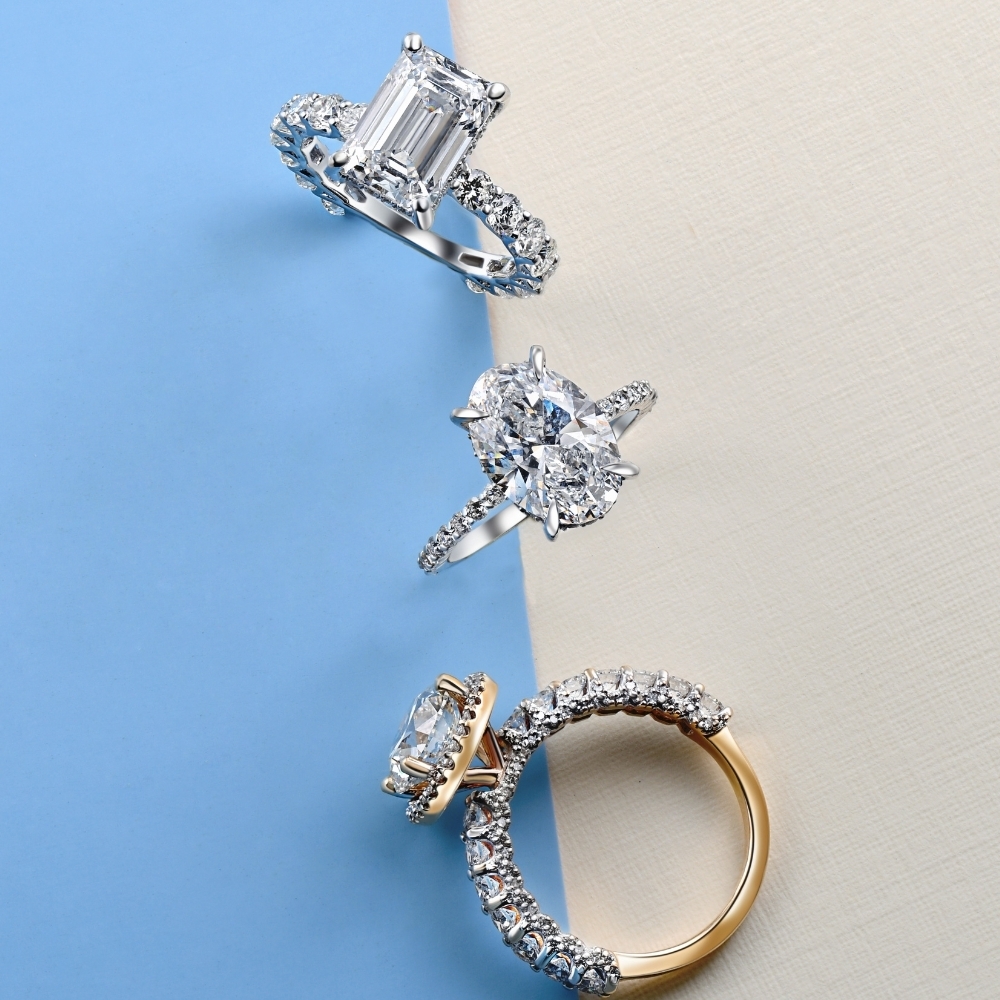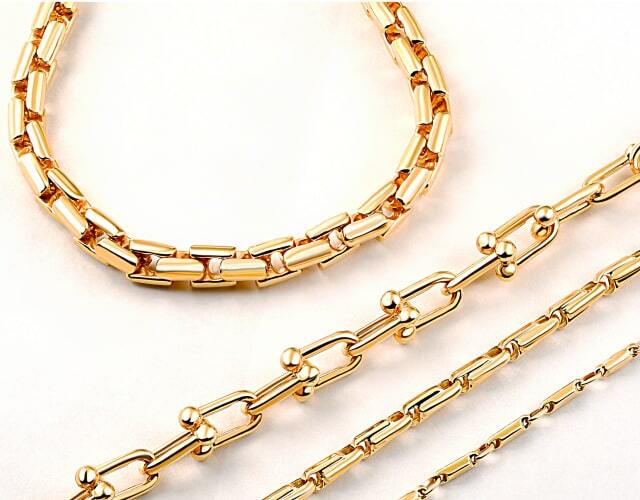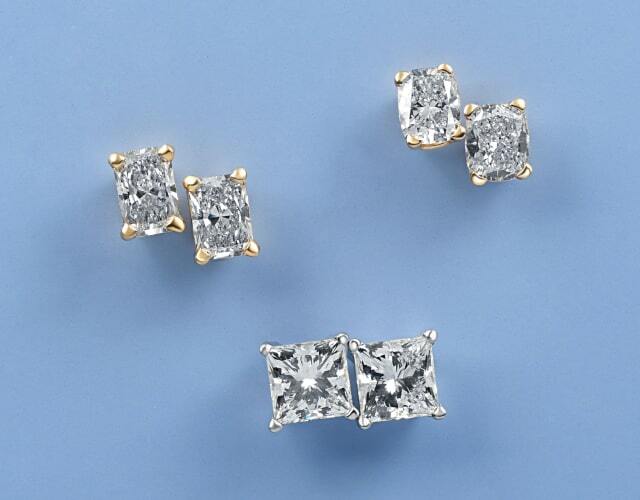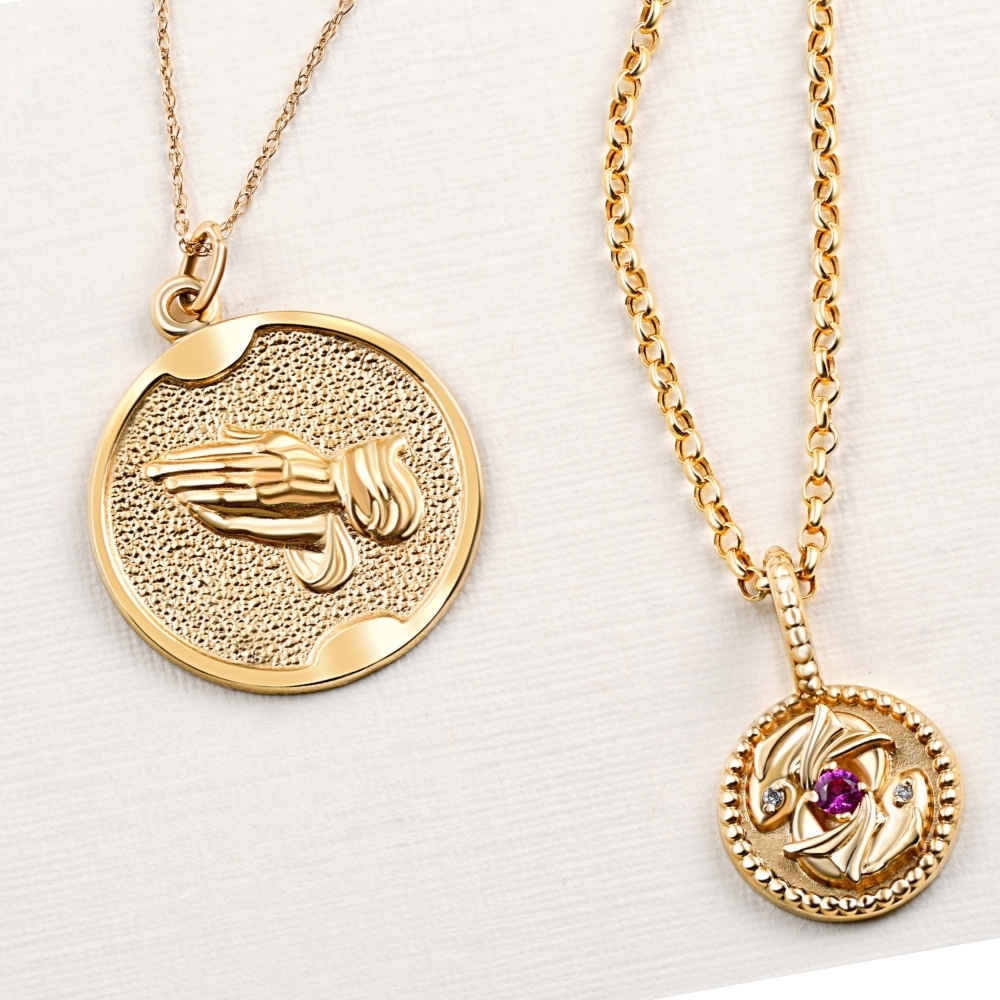
What Are EX3 Lab Grown Diamonds?
Over the last decade, scientists have been able to create technological processes that have helped us perfect the art of creating diamonds in laboratories that are physically, optically, and chemically identical to mined diamonds. Manufactured under highly controlled conditions of extreme heat and pressure, these EX3 lab grown gems are in no way different from the ones that are mined. The journey that starts from a seed of a pre-existing diamond turns into some of the best lab created diamonds. From there, we use those stones to create stunning and affordable lab grown diamond rings.
Why Choose an EX3 Lab Grown Diamonds?
The question is: why not choose one? Not only are they a great alternative to natural diamonds but they are produced in a safe environment with minimal environmental impact. Because the lab processes mimic the natural processes that form mined diamonds, it takes very sophisticated testing and equipment to tell the two stones apart. The best part? Lab created diamonds offer excellent value and cost 30% to 40% less than diamonds that are mined from the surface of the Earth. So, even though the naked eye and some microscopes can’t tell the difference, your bank account certainly can!
A Common Misconception about Pompeii Lab Grown Diamonds
While moissanite, white sapphire, or cubic zirconia may look like a diamond, they are not made up of true carbon crystals and can be distinguished by the naked eye. People often believe that affordable Pompeii Lab Grown Diamonds are also not real diamonds. We are glad to tell you that this is completely false. In fact, the carbon structure of an EX3 lab grown diamond is exactly the same as that of a real diamond. This is why they are almost impossible to differentiate from natural diamonds. The best lab created diamonds have even dazzled the skeptics!
Looks Mined, Costs Less
Because they are grown in controlled environments, lab created stones do not need to be mined and, hence, save you that cost while having a much smaller carbon footprint. Natural diamonds are quite expensive. EX3 lab grown diamonds, like the ones we use in some of our diamond engagement rings, are evaluated on the same basis. That includes their cut, clarity, color, and number of carats. A mined diamond for one carat costs about $5,000, while a one-carat lab grown diamond costs about $3,000. A fancy yellow colored diamond or a beautiful blue diamond costs up to $20,000 and $200,000, respectively.
Yellow and blue diamonds grown in a laboratory cost about one-quarter and one-tenth of the price of a mined stone. This way, you can gift your loved one a rare diamond within your budget. Over the years, as the popularity of these ethical stones has grown, the cost of the best lab created diamonds has stabilized, and now buyers can get much better deals, as well.
How Are EX3 Diamonds Made?
The creation of these diamonds starts with a robotic laser that slices slivers from a chunk of real diamond to produce tiny wafers. They are five millimeters wide and a quarter millimeter thick. That is about the size of a human hair! The laser blackens the diamond, and it is then placed on a steel block for polishing. Technicians use epoxy to keep it from sliding around. After applying an activator to the epoxy, the chemical reaction causes the epoxy to solidify in seconds. This firmly secures the silver on the block. This block is then screwed to a threaded rod that is attached to a metal arm.
The block and its diamond wafer are lowered onto a wheel that is swirling with diamond grit. Weights are applied to press the diamond wafer into the grit and, as the wheel spins, the resulting friction polishes any grime off the wafer. A level confirms if the wafer is correctly positioned, and the polishing takes it from sooty to crystal clear.
Now it’s ready to develop into one of the best lab created diamonds! Using a suction tool, the technician arranges several wafers in a uniform pattern on a special metal pedestal, giving them ample room to expand, as these pieces of diamond are destined for bigger things. He or she lowers a metal chamber over them, and a pump injects hydrogen and methane gas. The machine heats them to thousands of degrees at just the right pressure.
The gases form plasma, which rains onto the diamond wafers and causes them to grow. After two weeks, the diamond slivers have grown into stones at least ten times the original size. It is quite a spectacular transformation. But, these are diamonds in the rough, and they need a lot of work before they really sparkle. Epoxy is dabbed on the tip of a pointed steel rod called a dot, and the lab grown diamond is placed at its center. Then it is sent to the laser booth where the dot is gripped by a robotic arm. It turns so that a laser can trim the lab grown diamond from all sides.
Once the gem is crystal clear, a technician checks its quality using a jeweler’s magnifying glass. The crystal is lowered into another polishing wheel similar to the one used for cleaning when it was just a sliver. However, this wheel contours the completed stone. This process brings out all its glittering facets and gives it that classic diamond shape. This entire process puts geology on fast forward, and what takes tens of millions of years is done in a matter of just six to ten weeks.
Remember, Pompeii EX3’s lab grown diamonds are real diamonds. By purchasing these affordable Pompeii Lab Grown Diamonds , you are not only making the one you love the happiest person in the world without going bankrupt, but you are also saving the planet. It can't get better than that! Shop our collection of EX3 diamonds today!
 -
-  -
- 
 Engagement Rings
Engagement Rings
 Tungsten
Tungsten Wedding Rings
Wedding Rings
 Fine Jewelry
Fine Jewelry
 Diamond Studs
Diamond Studs
 Up To 80% Off
Up To 80% Off
 Find The Perfect Gift
Find The Perfect Gift
 White Gold
White Gold